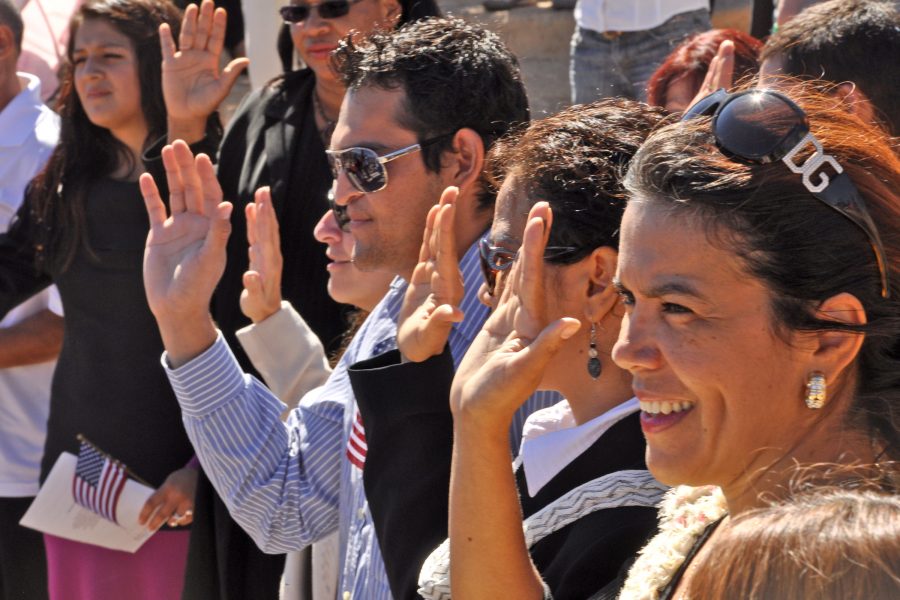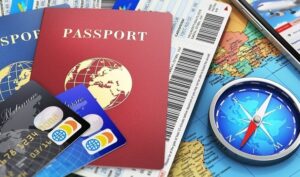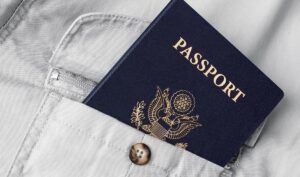
U.S. citizenship carries tremendous privileges, rights and benefits. That's why people will sacrifice so much to immigrate to America and seek citizenship. According to a senior fellow at the Migration Policy Institute, "citizenship is a very, very valuable commodity." If you're a permanent resident, our Citizenship Cost Calculator can show you how much you will save over a lifetime by becoming a U.S. citizen. Most Americans are born on U.S. soil, but for foreign-born individuals there are other ways to become a U.S. citizen.
In all, there are four fundamental ways to become a U.S. citizen: citizenship by birth in the U.S., citizenship through derivation, citizenship through acquisition, and citizenship through naturalization. Most immigrants in the United States become citizens through the naturalization process. In fact, nearly one million permanent residents apply for naturalization each year.
Citizenship through Birth
Under United States law, any person born within the United States (including the territories of Puerto Rico, Guam, the U.S. Virgin Islands, and the Northern Mariana Islands) is automatically granted U.S. citizenship. There is an exemption for children of parents who are foreign diplomats or members of a sovereign Native American tribe. The Fourteenth Amendment to the U.S. Constitution states that:
"All persons born or naturalized in the United States, and subject to the jurisdiction thereof, are citizens of the United States and of the State wherein they reside."
As most Americans are born on U.S. soil, this is clearly the post common of the ways to become a U.S. citizen. The next three paths address ways foreign nationals can obtain citizenship.
Citizenship through Acquisition
In some circumstances, a child automatically “acquires” citizenship even though that child was born outside the United States. At least one parent needs to be a U.S. citizen at the time of the child’s birth and several other conditions must be met. When this child marries and has children, those children may also acquire U.S. citizenship at birth. The ways a child can become a U.S. citizen through acquisition generally include:
Both parents were U.S. citizens
Requires that both parents were U.S. citizens at the time of the child's birth and the parents were married at the time of birth abroad, and at least one parent lived in the U.S., or its territories, or both, prior to the child's birth.One parent was a U.S. citizen
Requires that one parent was a U.S. citizen at the time of the child's birth abroad; and the child was born on or after November 14, 1986; and the parents were married at the time of birth; and the U.S. citizen parent was physically present in the U.S. or its territories for a period of at least five years at some time in their life prior to the birth, of which at least two years were after their 14th birthday.One parent was a U.S. citizen
Requires that one parent was a U.S. citizen at the time of the child's birth abroad; and the birth date is before November 14, 1986, but after October 10, 1952; and the child's parents were married at the time of the birth; and the U.S. citizen parent was physically present in the U.S. or its territories for a period of at least ten years at some time in their life prior to the child's birth, at least five of which were after their 14th birthday.
To obtain official documentation from the U.S. government that a person acquired U.S. citizenship through one of the above methods, the applicant must file Form N-600, Application for Certificate of Citizenship. The laws have changed several times over the years. Therefore, you’ll need to research the law that was in effect on the date of the child’s birth (and the parents’ birth, if grandparents were U.S. citizens). Or check your eligibility for free by starting the application on CitizenPath. It can get complicated. If you are unsure or have a complicated situation, seek the assistance of an experienced immigration attorney who can guide you through this process.
Citizenship through Derivation
When a parent naturalizes, their children (under the age of 18 and living with the parent at the time) may “derive” U.S. citizenship automatically, provided they are also permanent residents. What’s more, a child who gets U.S. citizenship through derivation does not have to participate in a naturalization ceremony. Generally, foreign-born children under 18 automatically acquire U.S. citizenship if they meet these three requirements:
- The child must have U.S. lawful permanent resident status ("green card" holder);
- At least one parent must be a U.S. citizen; and
- The child must be residing in the United States in the legal and physical custody of the U.S. citizen parent.
The laws on the automatic naturalization of children have varied over the years. Making a determination if the law applies to you is dependent on the law that existed when your parent’s naturalization took place. Also, citizenship cannot be derived from step parents. Check your eligibility for free by starting the application on CitizenPath. However, seek the assistance of an experienced immigration attorney who can guide you through this process if you have a complex situation or can't find the necessary documents.
Citizenship through Naturalization
Naturalization refers to the process in which a person not born in the United States voluntarily becomes a U.S. citizen. For foreign-born persons, naturalization is the most common way to become a U.S. citizen. There are several requirements that must be fulfilled before an individual can apply for citizenship. Generally, applicants must be 18 years old and fall into one of the following three basic eligibility categories:
- 5 years as a permanent resident | Learn more >
- 3 years as a permanent resident who has lived in marital union with a U.S. citizen spouse for at least 3 years | Learn more >
- Qualifying service in the U.S. Armed Forces | Learn more >
These are the three most common eligibility categories; the vast majority of naturalized citizens come through one of the above paths. Find a comprehensive list of eligibility categories in Chapter 4 of USCIS Guide to Naturalization. A permanent resident starts the naturalization process by filing Form N-400, Application for Naturalization.
Check your eligibility for free by starting the application on CitizenPath.
About CitizenPath
CitizenPath provides simple, affordable, step-by-step guidance through USCIS immigration applications. Individuals, attorneys and non-profits use the service on desktop or mobile device to prepare immigration forms accurately, avoiding costly delays. CitizenPath allows users to try the service for free and provides a 100% money-back guarantee that USCIS will approve the application or petition. We provide support for the Naturalization Package (Form N-400), Citizen Certificate Package (Form N-600), and several other immigration services.
Want more immigration tips and how-to information for your family?
Sign up for CitizenPath’s FREE immigration newsletter and
SAVE 10%
on our immigration services







